Shared Space Malmöer
Baugruppenhaus mit 22 Wohnungen und einem Sozialladen im Erdgeschoss
>> scroll down for english
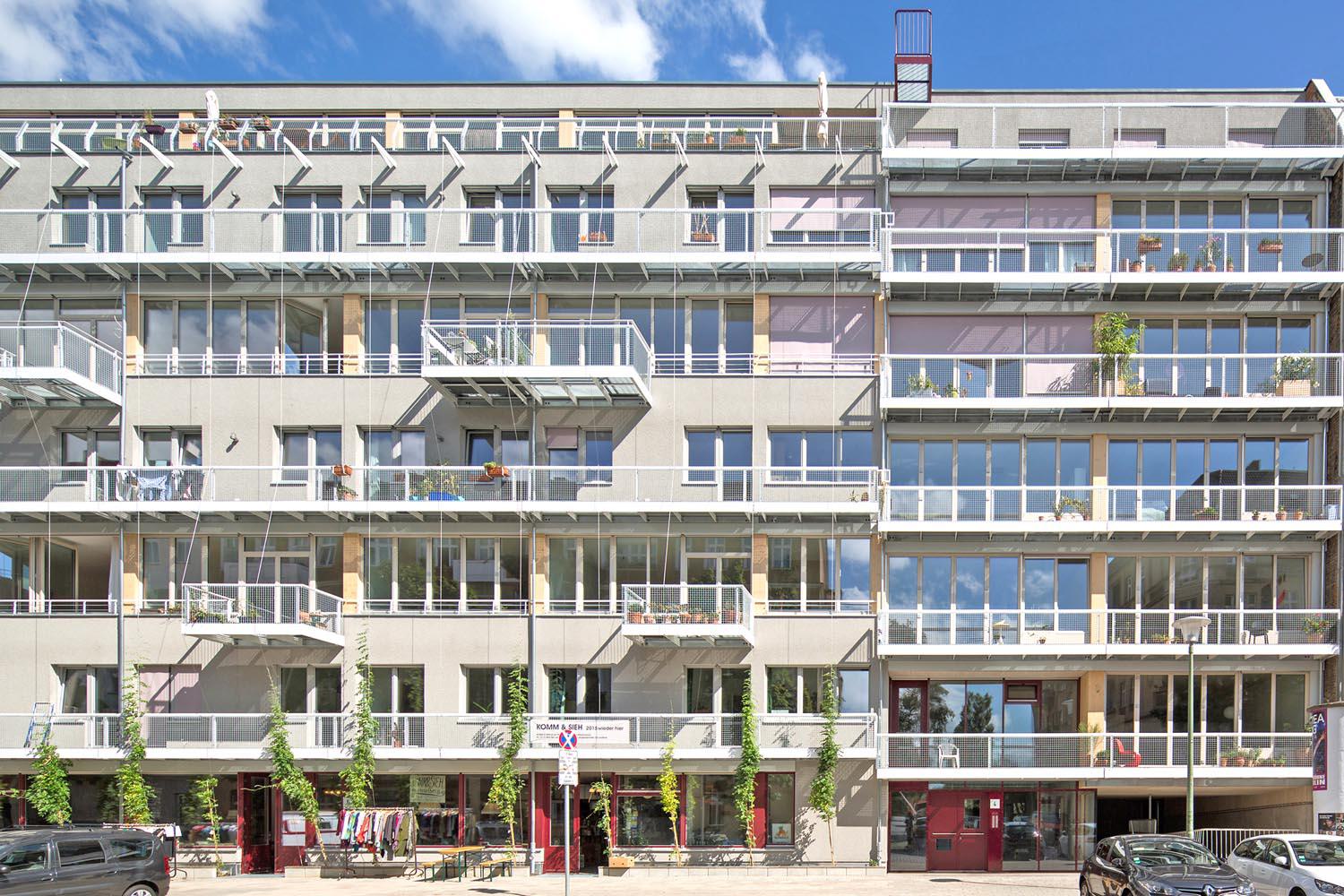
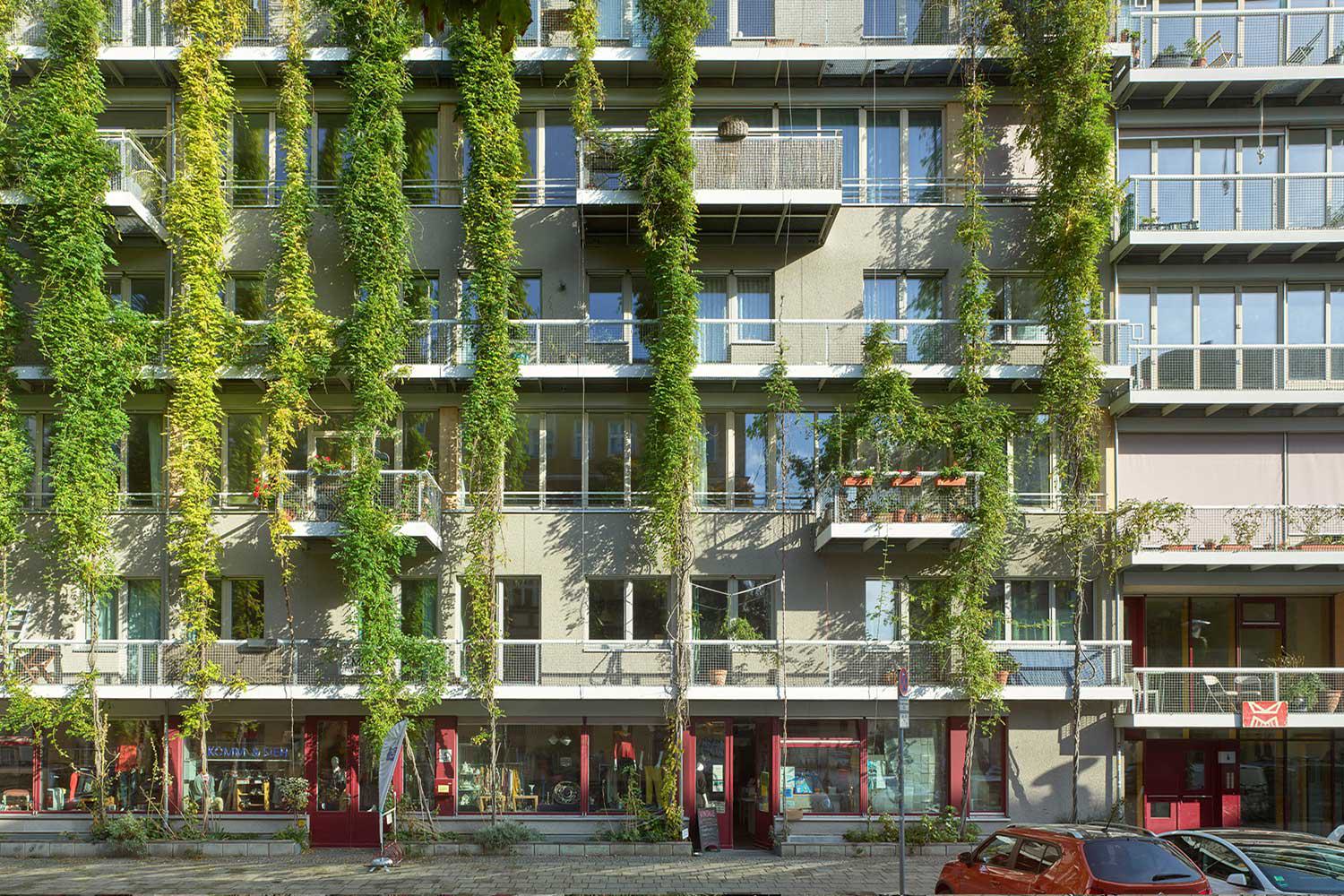
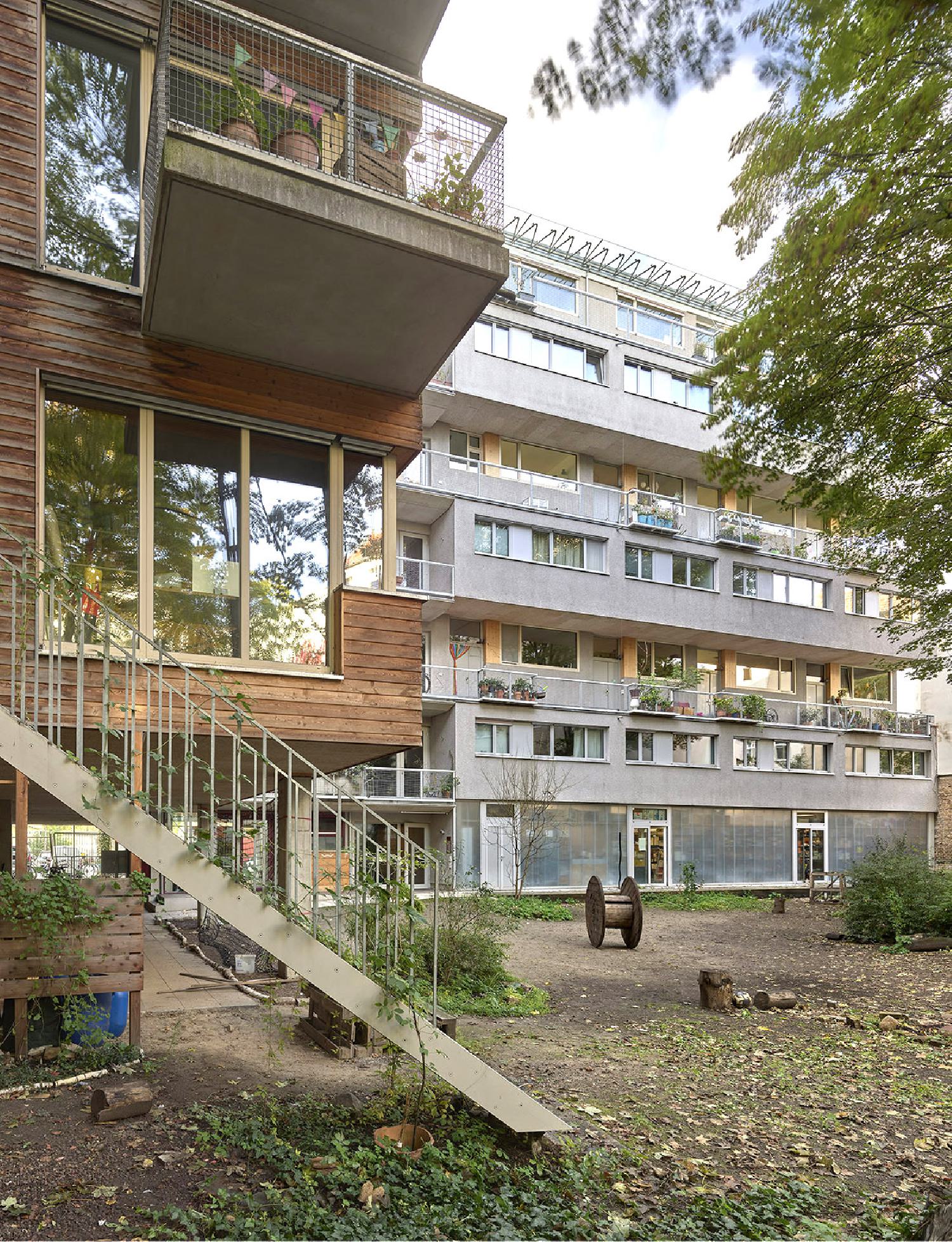
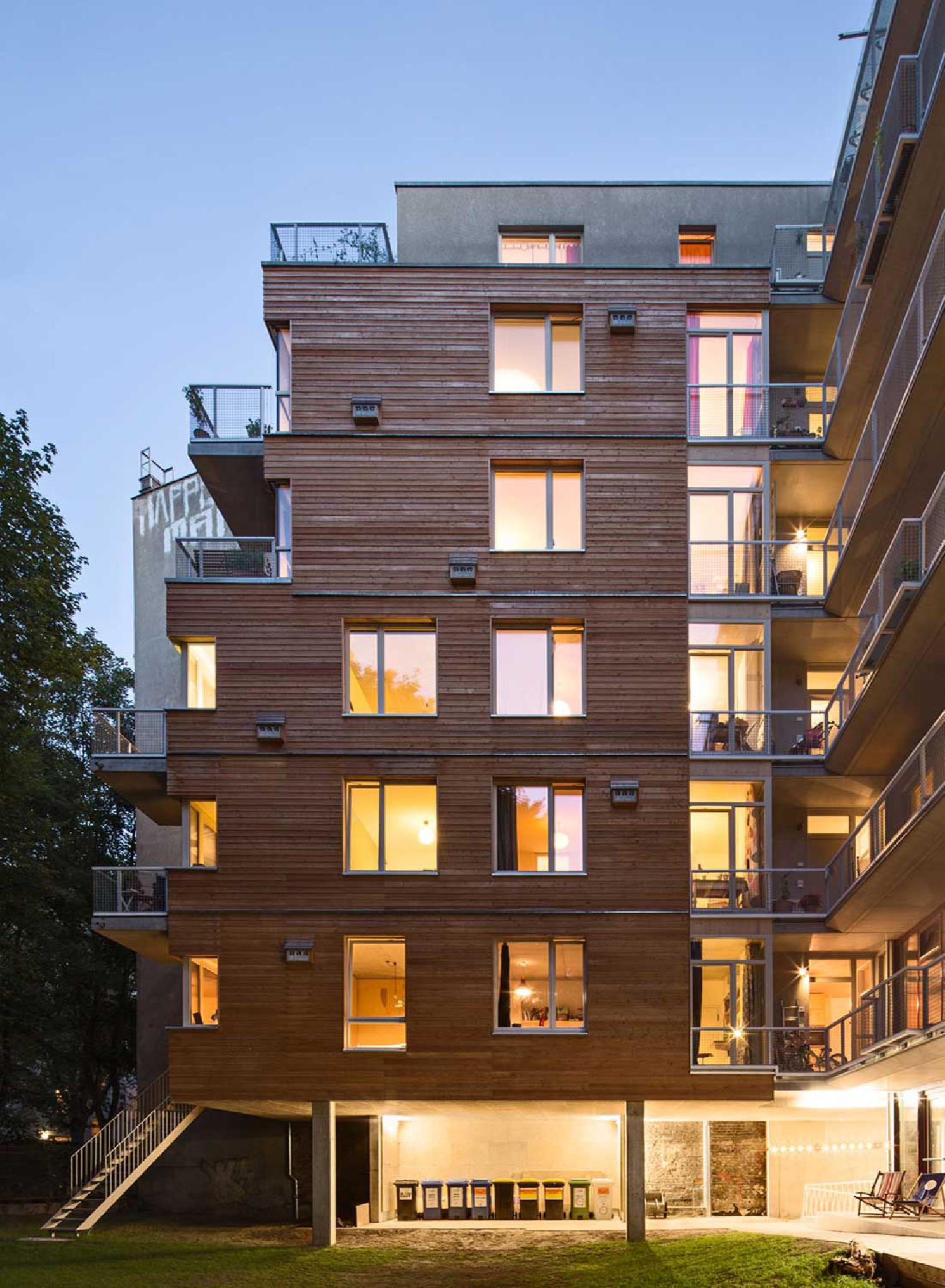
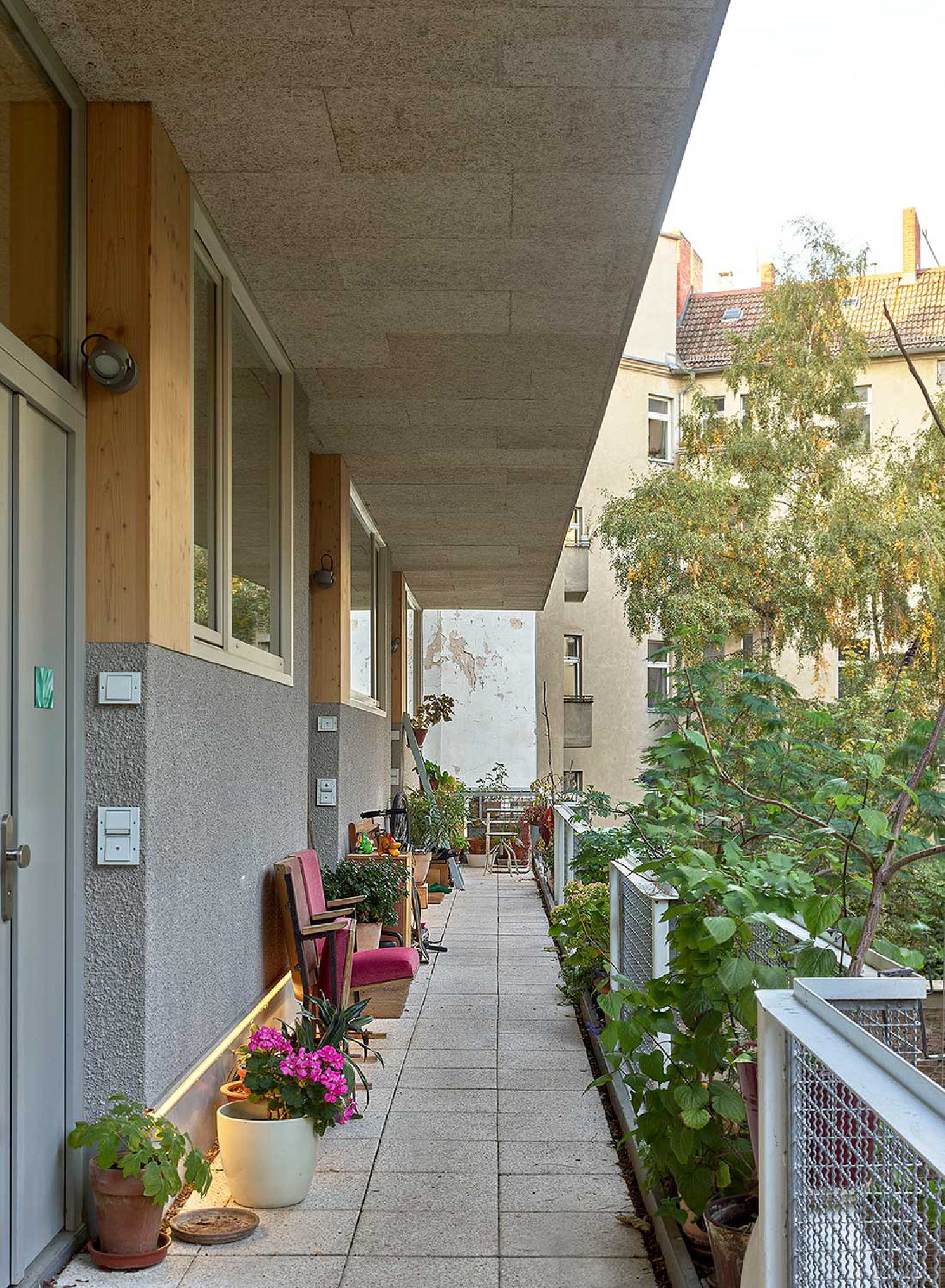
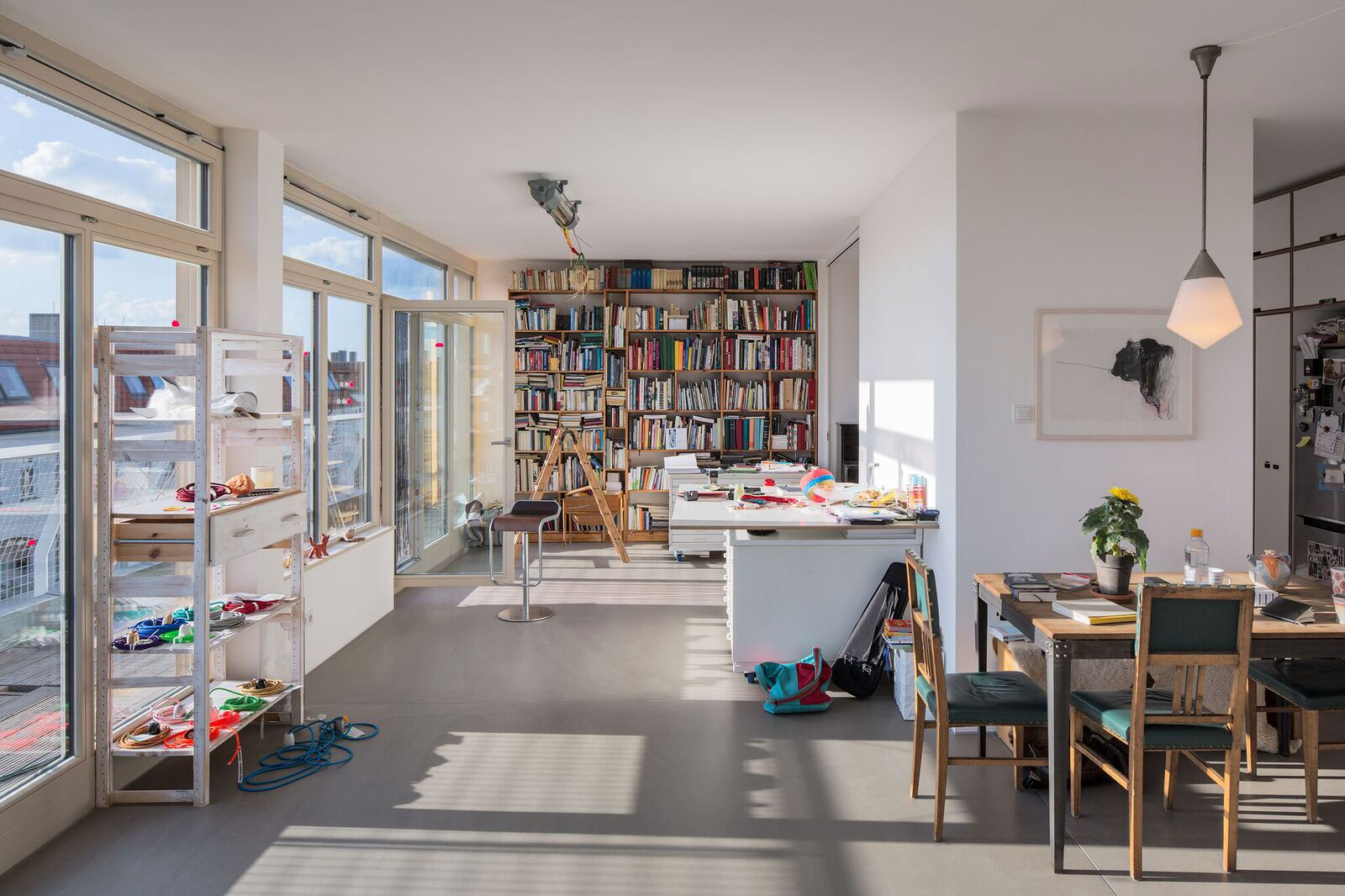
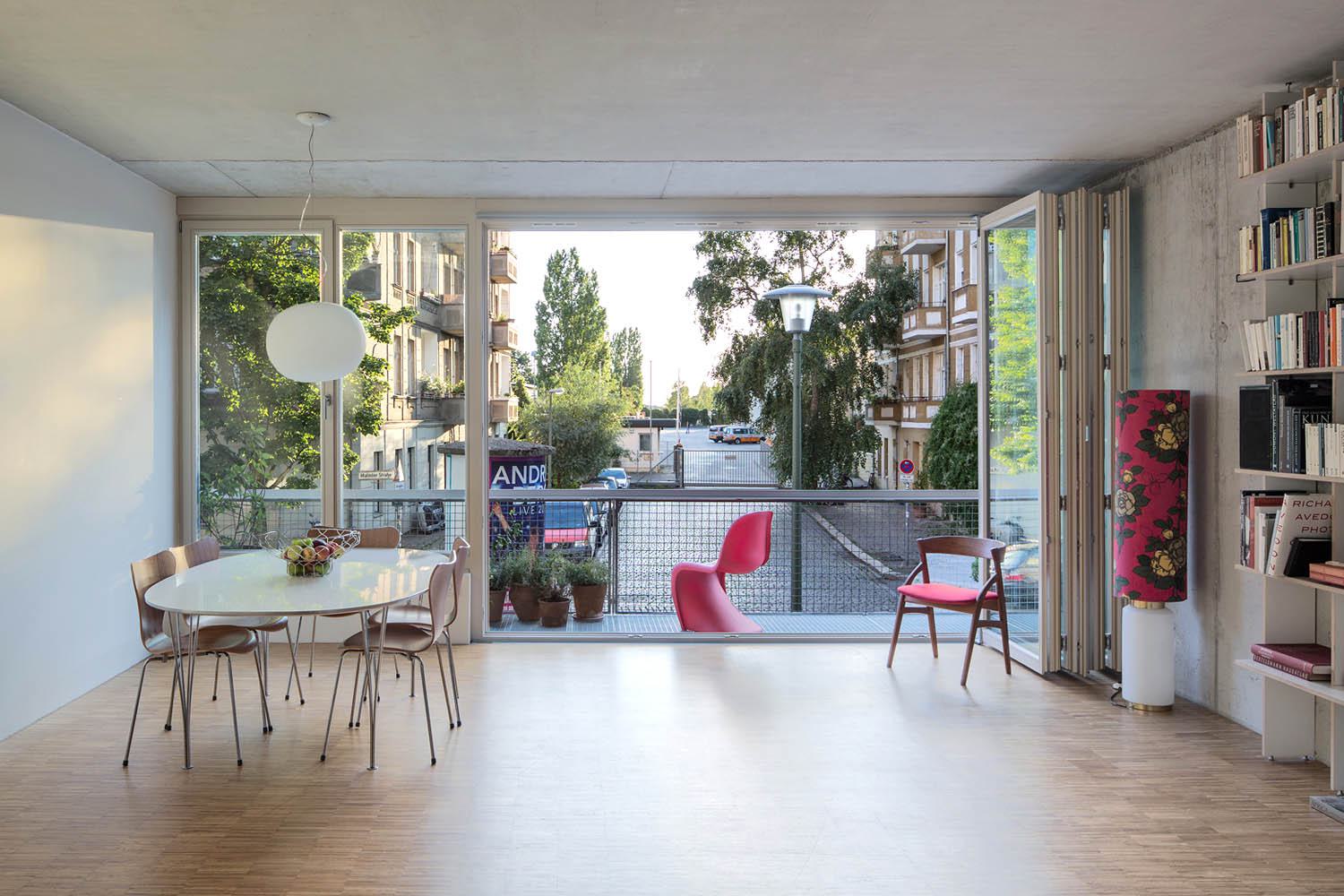
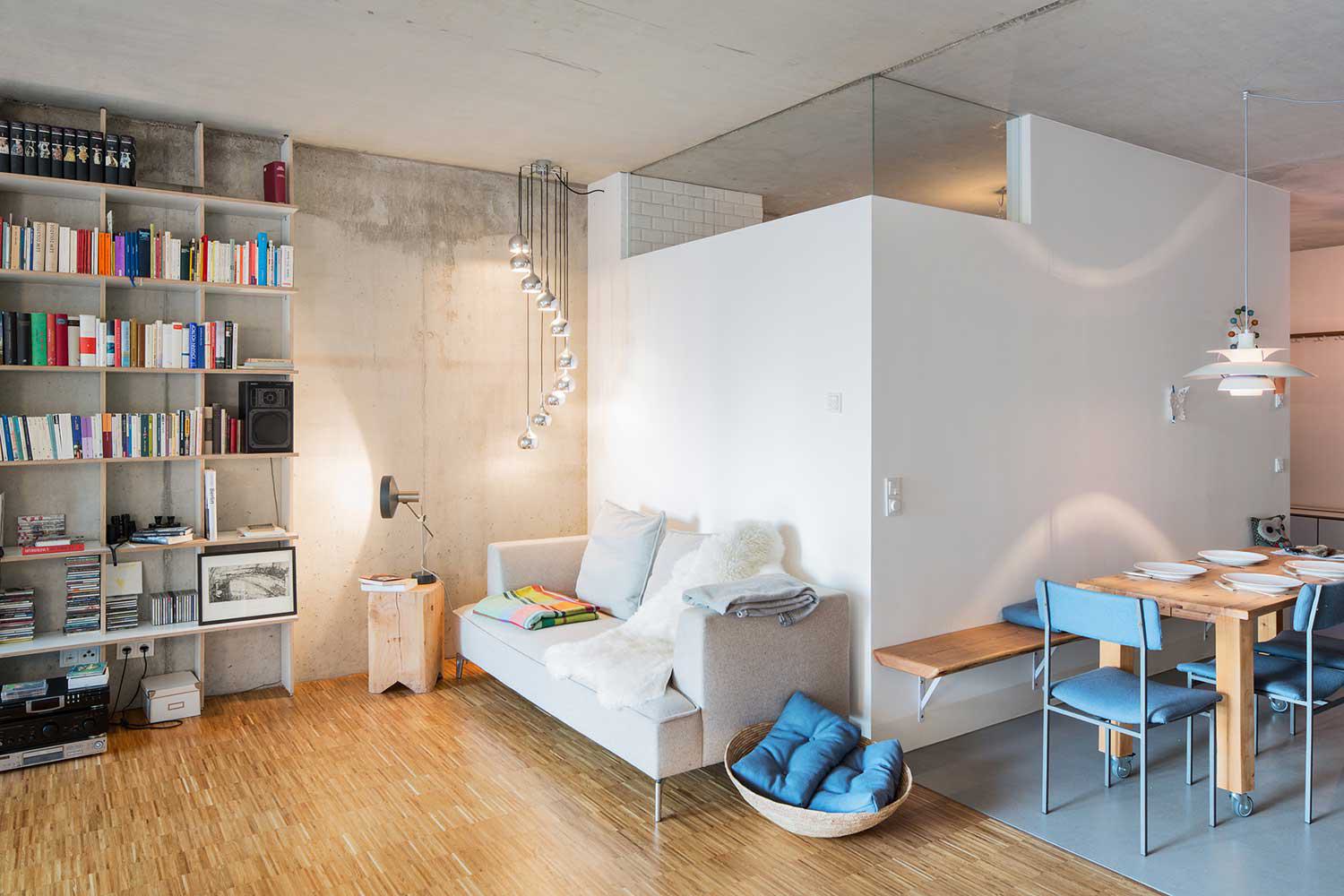
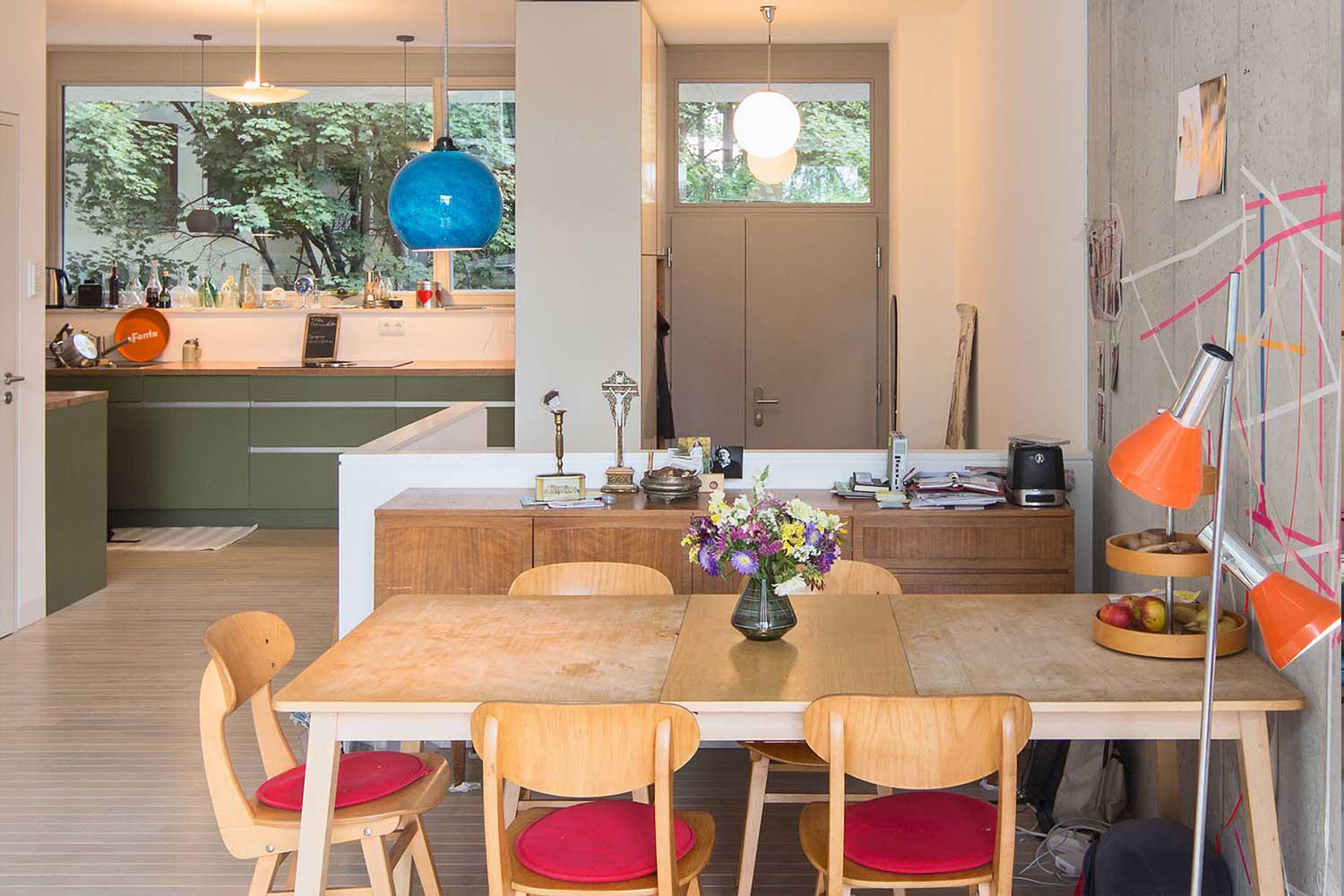
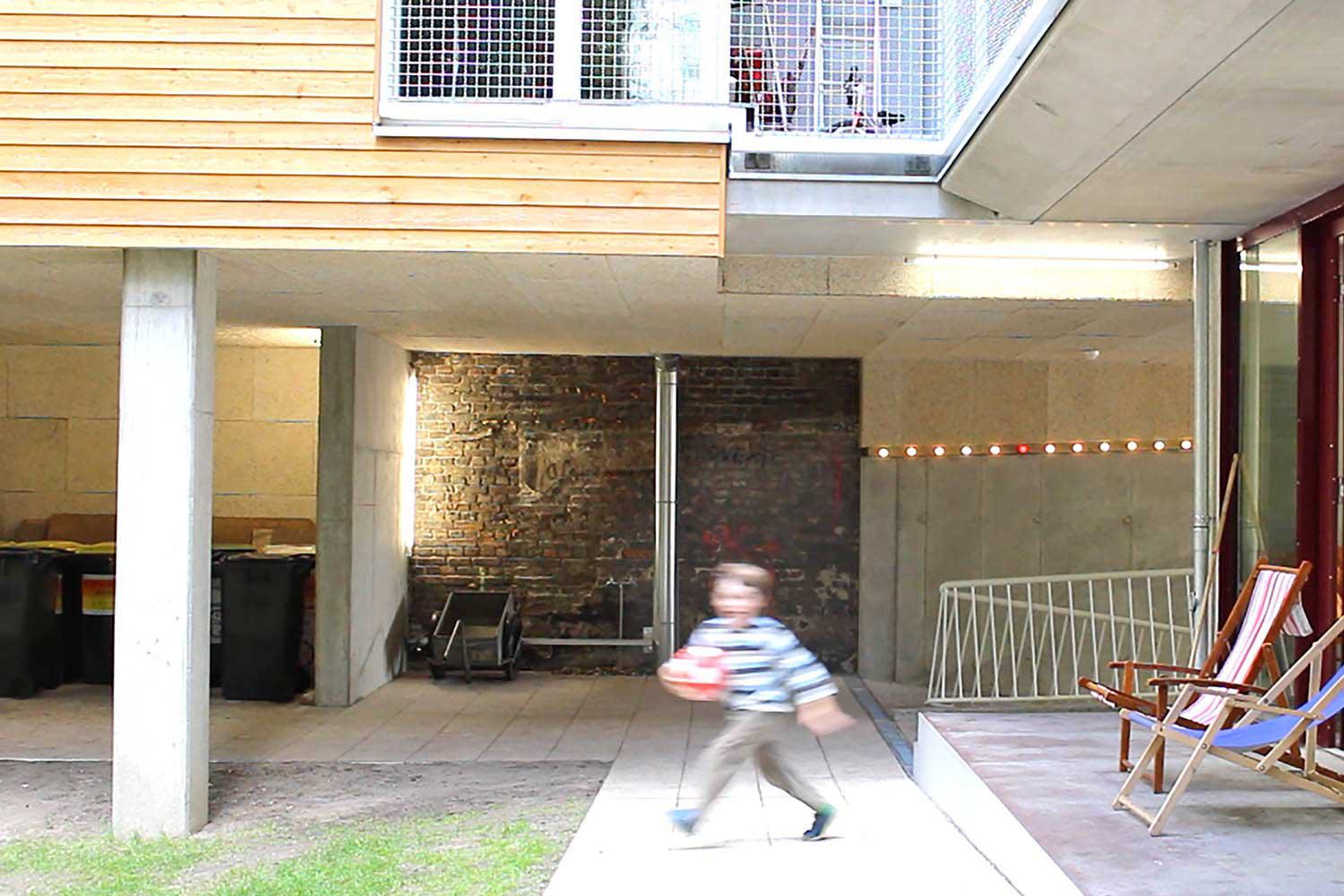
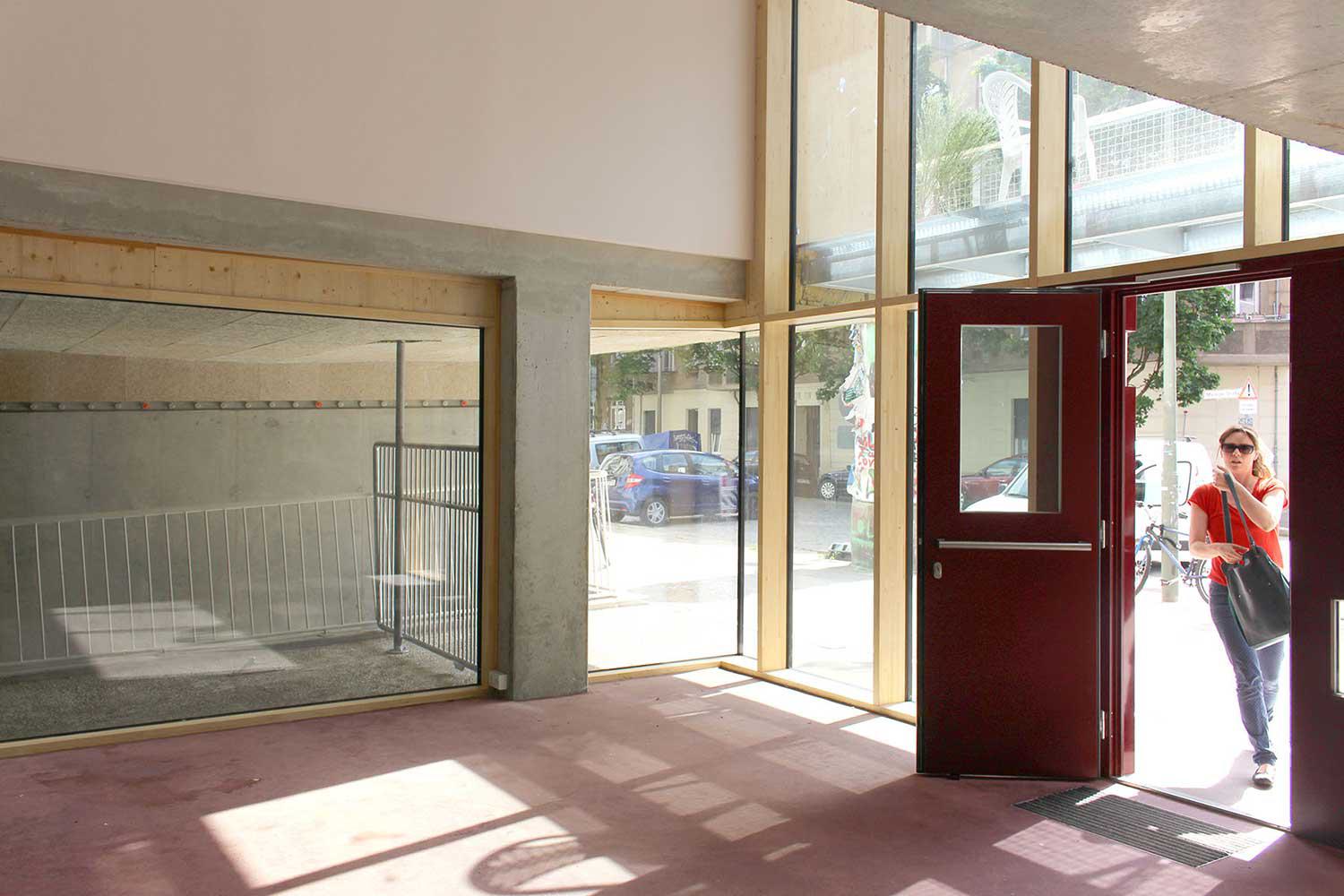
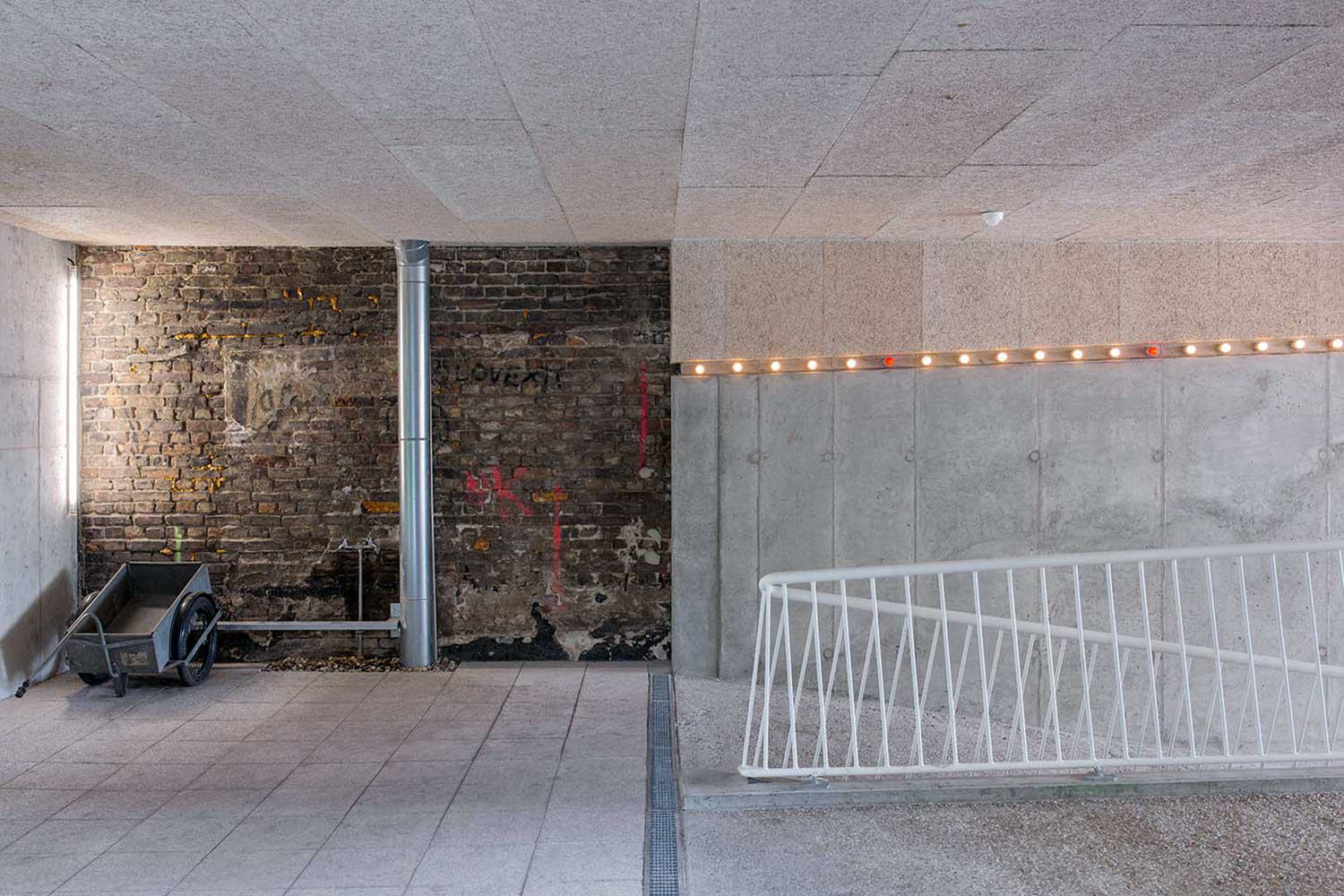
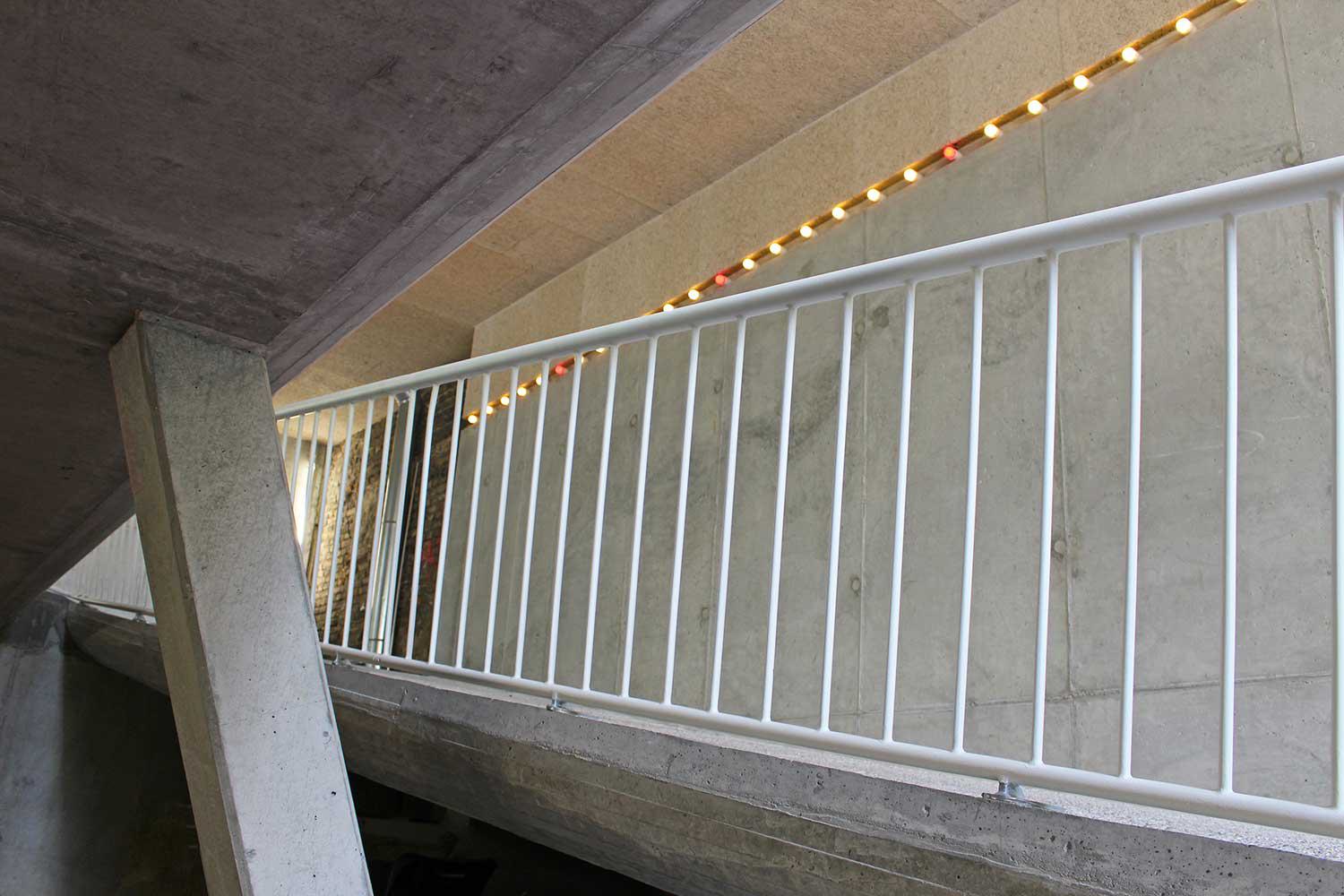
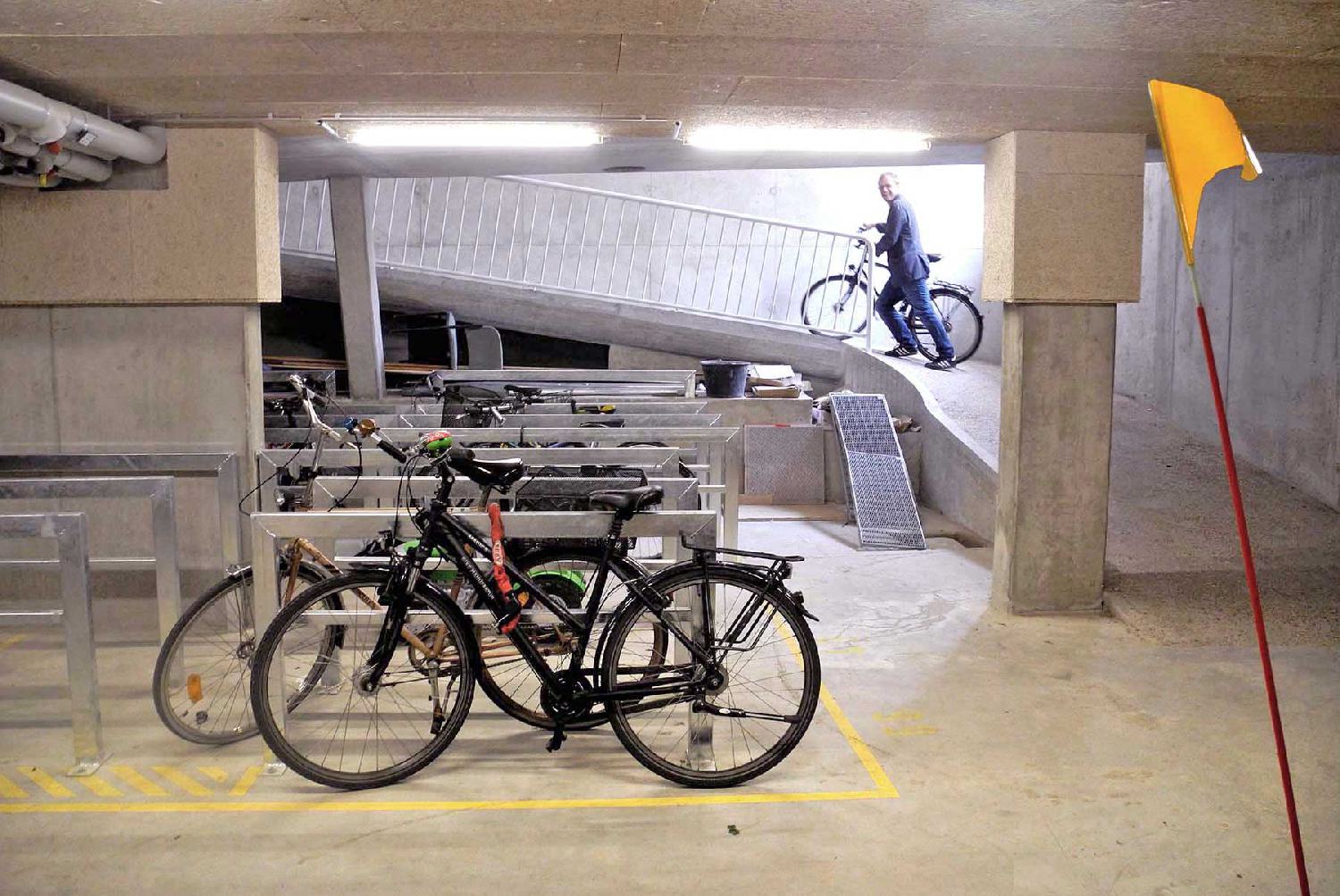
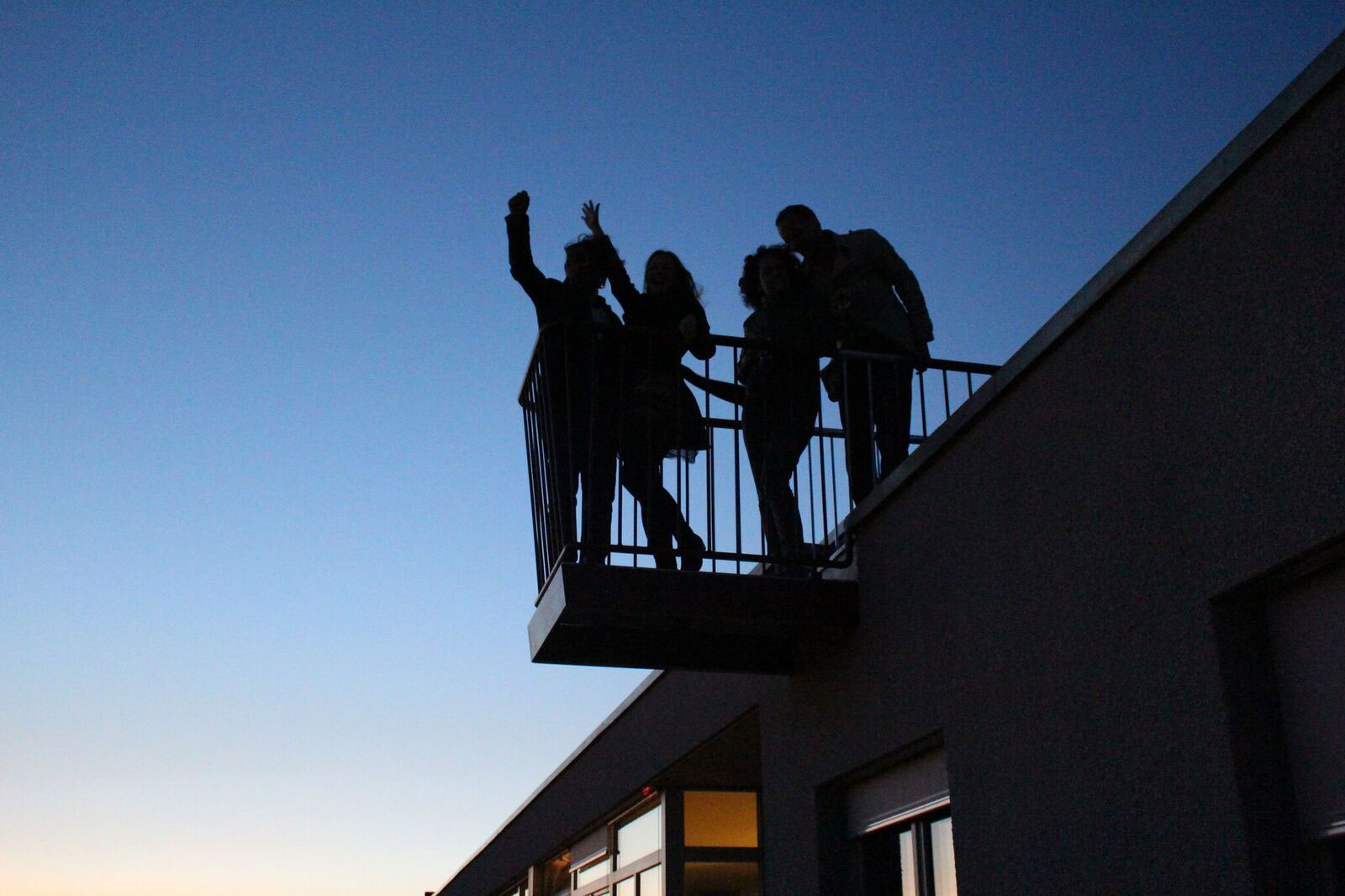
Baugruppenhaus mit 22 Wohnungen und einem Sozialladen im Erdgeschoss
>> scroll down for english















>> scroll down for english
22 Wohnungen für eine Baugruppe, Fahrradtiefgarage, ein zweigeschossiger Gemeinschaftsraum, Dachterrasse und ein gemeinnütziger Kiezladen (250m2 im EG, Integrationsprojekt der Berliner Stadtmission), der sich vorher in einer Baracke auf dem Grundstück befand.
130 Meter Laubengang ermöglichen die Erschließung von 22 Wohnungen über nur ein Treppenhaus und sind zugleich Orte, an denen sich die BewohnerInnen gern begegnen und aufhalten. Um die diffizile Balance zwischen Privatheit und Gemeinschaft zu halten, wurde ein neuartiger Wohnungstyp speziell für die Situation am Laubengang entwickelt:
Die Anhebung der Wohnebene in den Maisonette-Wohnungen um 2 Stufen führt dazu, dass der Ausblick nach draußen nicht eingeschränkt ist, der direkte Einblick in die Wohung jedoch nicht möglich ist. Die großzügige Dimensionierung der Laubengänge in Höhe und Breite sowie Ausweitungen auf der Geländerseite begünstigen die Aneignung durch die Bewohner und sind die baulich-räumliche Voraussetzung für lebendigeNachbarschaft und informelles Miteinander.
Der gemeinnützige Kiezladen konnte nach der Bauzeit an seinen angestammten Ort zurückkehren. Alle Mitglieder der Baugruppe beteiligten sich an den Baukosten für die große Fläche im EG, die nun dauerhaft zu sehr günstigen Konditionen an die Stadtmission vermietet wird.
Projektsteuerung: buero-eins-punkt-null Berlin
Tragwerksplanung: Pichler Ingenieure Berlin
Bauphysik: Margot Woge Berlin
Geotechnik: Eberhard Bindszus Berlin
> > E N G L I S H < <
The building is located on a side street in Prenzlauer Berg, where a former one-story wood barrack stood since the 1920s, operating as a thrift shop, a lasting mark of the times prior to German’s Reunification. Integrating the store to the new construction and setting the building 70cm back from the front lot line were our initial premises. This setback would act as a memory of the previously existing urban void while freeing up space for seating, playing and greenery.
Due to the participatory design process, the users' needs and expectations led to important decisions, such as the use of only one stairwell and the placement of apartments above pilotis bordered by a communal garden, used for gatherings and co-op meetings. Another key element was the continuous street-facing balconies (or loggias) with no separation in between, allowing residents to mingle freely.
With main access through a 2-story ground floor space from where one can go up to the roof terrace, the building houses 22 residential units, including 11 maisonettes. The floor level in the apartment lines next to the main entrance is 40cm higher than the units right above it, generating a fine differentiation clearly readable from the street.
The existing shop, placed in an alternative location during construction, reopened with a new up-cycling concept in a 250m² ground floor space rented at minimum maintenance cost. Adjacent to it, the double-height, 6m wide building entry unfolds into a passageway connecting the street to the semi-public courtyard garden via an open concrete bridge. This element, which is followed by a steeper ramp, spans over an underground bicycle garage, from where one can reach the stairwell.
Since its opening in June 2015, the active use of the common areas has confirmed the design intentions to create a co-living space that emphasizes how private and public realms can interact actively with each other.
Team: Christoph Wagner, Wenke Schladitz, Stefan Tietke, Christine Mösch, Karsten Buchner, Katja Fischer, Rainer Krautwurst, Marian Jobke